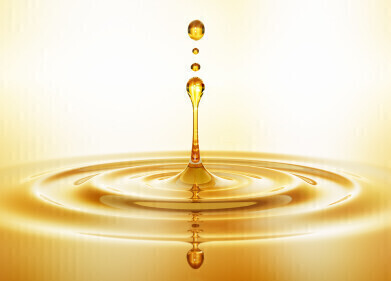Synthetic fuels
How is the EU Regulating for Green Fuels?
Mar 03 2023
Over the last few years, the European Commission has been working through a revision of the 2014 Alternative Fuels Infrastructure Directive with a new regulation that sets out mandatory national targets for the deployment of alternative fuels infrastructure in the EU. The directive required EU countries to develop national policy frameworks (NPFs) for developing publicly available refuelling and recharging points for alternative fuel vehicles and vessels, to improve coordination of alternative fuel infrastructure development and provide long-term security for investment in alternative fuels and alternative fuel vehicles.
On 14 July 2021, the European Commission presented the Fit for 55 package, a set of proposals to make the EU's climate, energy, land use, transport, and taxation policies fit for reducing net greenhouse gas emissions by at least 55% by 2030, compared to 1990 levels. The package included the proposal to repeal the 2014 Directive and replace it with a regulation to ensure the swift and coherent development of the infrastructure network across the EU.
The proposed regulation sets out targets for publicly available electric charging infrastructure for light-duty road vehicles, mandatory national fleet-based targets, and distance-based targets for light-duty and heavy-duty road vehicles. It requires EU Member States to ensure a number of recharging stations are in place for heavy-duty vehicles in urban nodes. The draft regulation also includes provisions for ensuring user-friendliness of recharging infrastructure, such as payment options, price transparency, consumer information, non-discriminatory practices, and smart recharging.
The regulation also sets out targets for the deployment of publicly accessible hydrogen refuelling stations with a maximum distance of 150 km between them along the TEN-T core and comprehensive network and at least one in every urban node. It sets targets for the deployment of shore-side electricity supply for certain seagoing container and passenger ships in maritime ports and inland waterway vessels, and for electricity supply to stationary aircraft at TEN-T core and comprehensive network airports. The regulation contains provisions for EU Member States to ensure minimum coverage of publicly accessible refuelling points for liquefied natural gas dedicated to heavy-duty vehicles on the TEN-T core and comprehensive network and to ensure an appropriate number of LNG refuelling points in maritime TEN-T ports. The file was referred to the Transport and Tourism Committee (TRAN) in the Parliament. The draft report was published on 14 February 2022 and presented to the TRAN committee on 14 March 2022. It makes several amendments to strengthen the Commission's proposed provisions. The deadline for amendments in TRAN was set for 18 March 2022. On 2 June 2022, the Council adopted its General Approach, its position for negotiations with the Parliament on the final wording of new rules.
Parliament's TRAN committee adopted its report on 3 October 2022, proposing a number of targets that are more ambitious than the Commission proposal's. The report envisages faster roll-out of infrastructure where electric-vehicle uptake has been low to date. It includes higher power output requirements per charging station and some infrastructure targets to be achieved earlier. On 19 October 2022, the Parliament adopted its position for the interinstitutional negotiations, according to which there should be at least one electric charging pool for cars every 60 km along the TEN-T road network by 2026 and hydrogen refuelling stations along main EU roads every 100 km by 2028.
Negotiations between the European Parliament and the Council are now ongoing. The main areas of debate include the level of ambition and the timeline for the implementation of the infrastructure targets. The Parliament is pushing for more ambitious targets and faster implementation, while the Council is looking for a more flexible approach that takes into account the different situations of each Member State.
The final outcome of the negotiations is expected to be a compromise that balances the different positions and takes into account the need for a coordinated and efficient deployment of alternative fuels infrastructure across the EU. The new rules are expected to contribute to the decarbonization of the transport sector and the achievement of the EU's climate and energy goals.
The revision of the Alternative Fuels Infrastructure Directive is a key element of the EU's strategy to promote the use of alternative fuels and decarbonize the transport sector. The proposed regulation sets out ambitious targets for the deployment of alternative fuels infrastructure for road vehicles, vessels, and stationary aircraft, and includes provisions for ensuring user-friendliness and smart recharging. The negotiations between the European Parliament and the Council are ongoing, and the final outcome is expected to be a compromise that balances the different positions and takes into account the need for a coordinated and efficient deployment of alternative fuels infrastructure across the EU.
Digital Edition
PIN 25.6 Buyers' Guide
January 2025
Buyers' Guide Directory - Product Listings by Category - Suppliers Listings (A-Z) Articles Analytical Instrumentation - ASTM D7042: The Quantum Leap in Viscosity Testing Technology -...
View all digital editions
Events
SPE Hydraulic Fracturing Technology Conference and Exhibition
Feb 04 2025 The Woodlands, TX, USA
Feb 05 2025 Guangzhou, China
Trinidad and Tobago Energy Conference 2025
Feb 10 2025 Point Lisas, Trinidad
Feb 11 2025 Lagos, Nigeria
Feb 13 2025 Manama, Bahrain



















